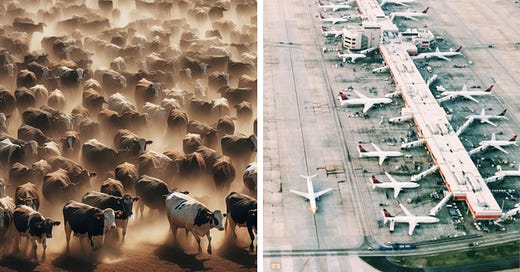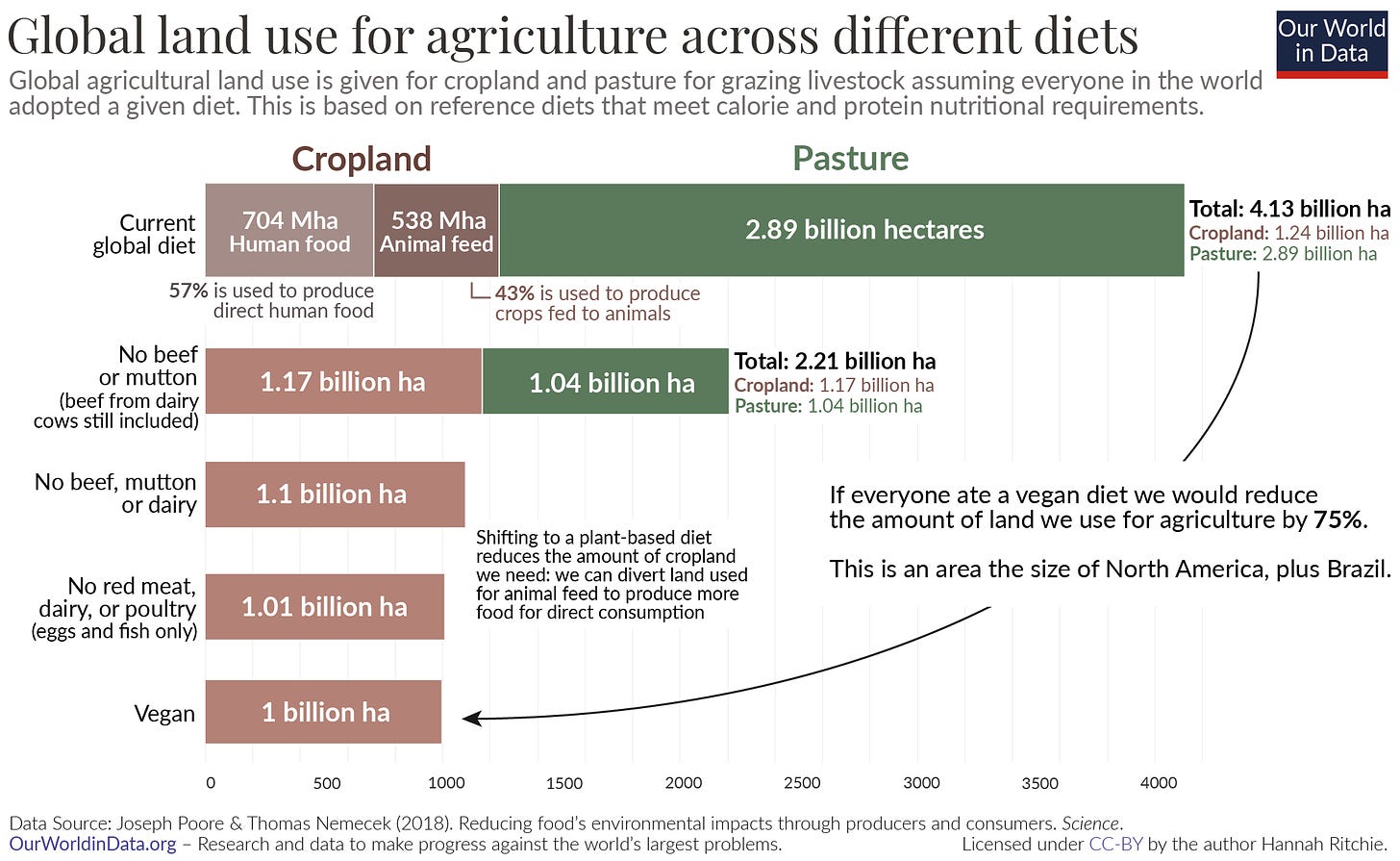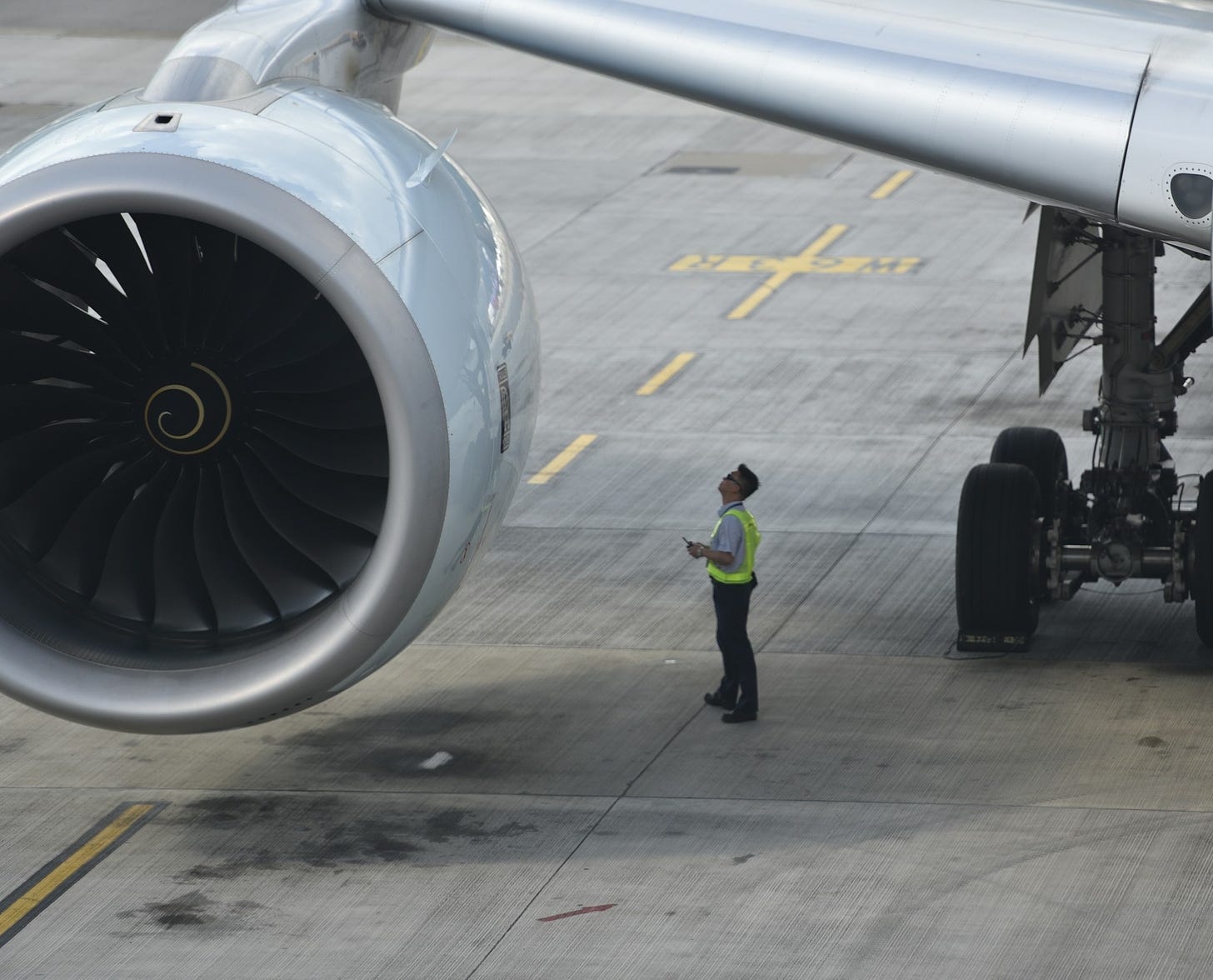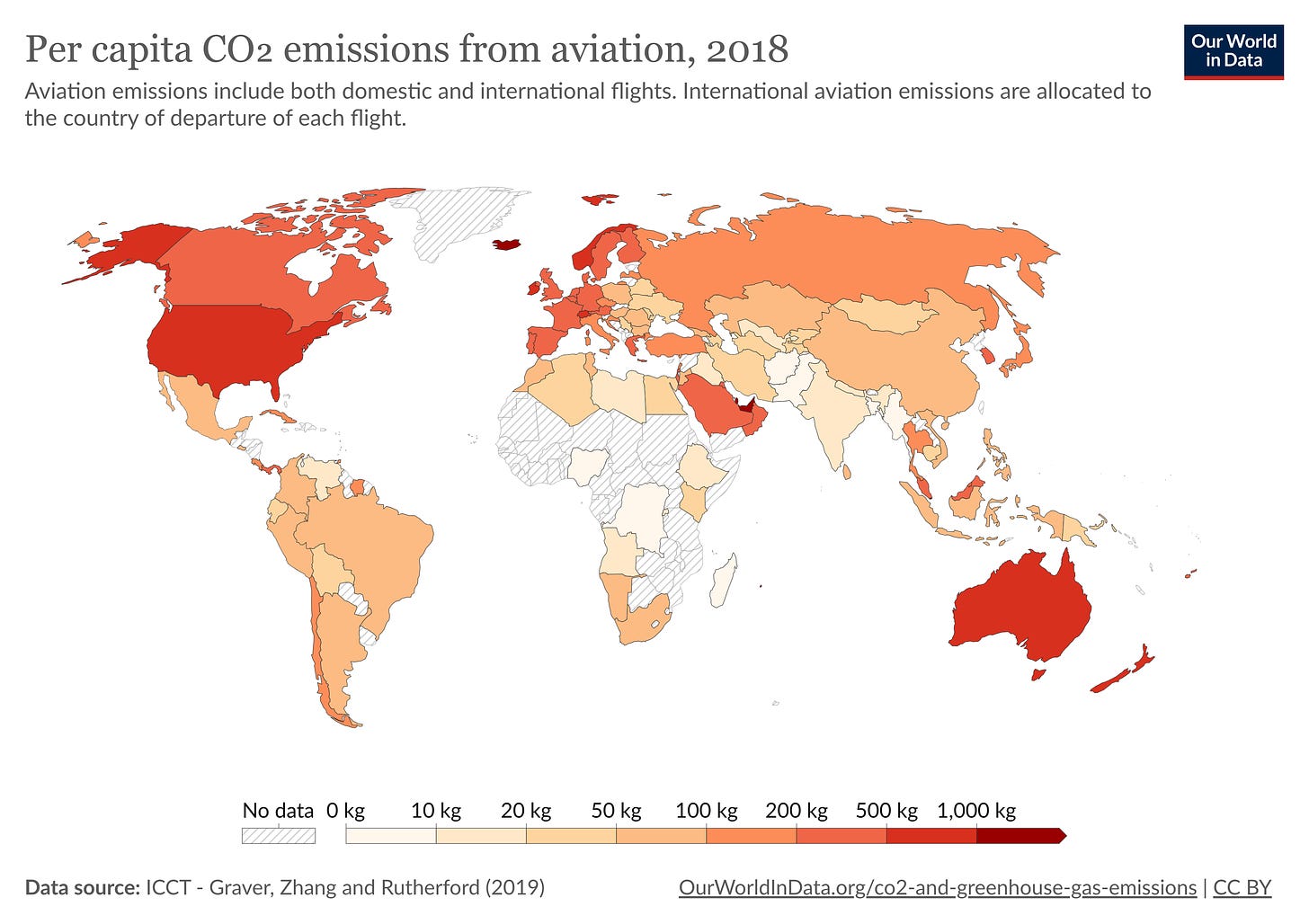Livestock Produces Five Times the Emissions of All Aviation
... while a single flight can already exhaust your annual carbon budget.
By 2030, there will be 1.5 extreme weather disasters every day. And this is just one of many horrifying consequences of climate change. The only way to stop this trend: rapid, deep, and immediate emission reductions. This article shows why taking animals off our plates is a crucial step in achieving this.
What share of global greenhouse gas emissions come from the animal industry?
To answer this question, let’s briefly look at three of the most-cited studies in this area:
Report “Livestock's Long Shadow” (United Nations, 2006)
Key quotes:
“The livestock sector emerges as one of the top two or three most significant contributors to the most serious environmental problems, at every scale from local to global[, including] land degradation, climate change and air pollution, water shortage and water pollution, and loss of biodiversity.”
“The livestock sector is a major player, responsible for 18 percent of greenhouse gas emissions measured in CO2 equivalent. This is a higher share than transport.”
Report “Tackling Climate Change Through Livestock” (United Nations, 2013)
Key quote:
“With [greenhouse gas] emissions along livestock supply chains estimated at 7.1 gigatonnes CO2 per annum, representing 14.5 percent of all human-induced emissions, the livestock sector plays an important role in climate change.”
Research Article “Emissions from Animal Agriculture—16.5% Is the New Minimum Figure” (Richard Twine, 2021)
Key quotes:
“For emissions from animal agriculture, we have a potential range between 16.5 and 28.1% (…) the number may not be as low as 16.5%, which should be seen as a new minimum.”
“Certainly, the findings presented here show that scientists, policy makers, civil society, and journalists should stop using the 14.5% figure.”
Why are the results so different?
Even the most conservative of the three estimates confirms that the animal industry is a significant contributor to climate change. But why do the study results vary so much?
For a comprehensive assessment of emissions, the entire supply chain of the animal industry must be considered. For instance:
Methane: Different sources argue that the lower UN estimates overlooked crucial points, such as the methane emissions from ruminants, which are about 25 times more climate-damaging than CO2. Results from a 2021 study indicate that real-world methane emissions from factory farms are 39 to 90% higher than models like the FAO’s predict.
Land use & deforestation: Another factor that plays a huge role but has not been sufficiently considered are additional emissions from land use change and deforestation, which alone account for 15-20% of global greenhouse gas emissions. Since 2000, the world has lost about 10% of its tree cover.
The animal industry is responsible for a staggering 70% of rainforest destruction in South America and by far the leading cause of deforestation worldwide (for pastures and feed cultivation).
If the world adopted a plant-based diet we would reduce global agricultural land use from 4 to 1 billion hectares.
Conflicts of interest
Citicism has also been raised that UN’s Food and Agriculture Organization (FAO), which authored the two UN reports above, has close connections with the meat and dairy industry, raising concerns about potential influence on their study results. Ex-officials at FAO say its leadership censored and undermined them when they highlighted how livestock methane is a major greenhouse gas.
The animal industry has a powerful lobby, spending millions to block climate action and policy. The Guardian recently reported how Big Meat and Big Dairy lobbyists turned out “in record numbers” at the world’s biggest climate summit (three times as many delegates as last year!)
The lower UN estimate (and other, even lower ones) should be seen with a critical eye due to agribusiness lobby efforts. Note that I have also rejected unrealistically high estimates (e.g., 51%, 87%) and not even included these in the above discussion.
Bottom line
Given (1) the above considerations on methane emissions, land use, and deforestation, (2) existing conflicts of interest, and (3) Richard Twine thorough argumentation against the lower UN estimate, it can reasonably be assumed that the emissions of the animal industry are currently somewhere in the range estimated by Twine (between 16.5 and 28.1% of global GHG emissions).
Before being targeted by what insiders say was a highly problematic pressure campaign by the meat and dairy industry, the UN FAO estimated the emissions of the livestock sector at 18% of global GHG emissions in 2006. This was almost 20 years ago.
While animal agriculture is doomed to extinction in the long run due to multiple demographic and economic trends, the industry has been rapidly growing over the last years and decades. Meat production rose over 7% between 2021 and 2023 alone, and by almost 20% since 2010. This outpaces the growth of several other emission-heavy industries, including the world’s biggest GHG emitter, the energy sector.
It can therefore be assumed that relative emissions of the animal industry have further risen since the publication of FAO’s 2006 report — and even since Twine’s 2021 research article came out, leading to the following conclusion:
20% is a highly conservative estimate for the animal industry’s share of global greenhouse gas emissions. Research related to methane emissions, land use, and deforestation indicates that it is likely higher.
The stated figure of 20% lies just 2% above the UN estimate from 2006, and well towards the lower end of the range determined by Richard Twine (2021), in fact, within the lowest sixth of the range. It also aligns with recent research results published in the renowned science journal nature food.
Comparing the result with aviation
Air traffic is responsible for an estimated 2.5% of global carbon emissions. When taking non-CO2 climate impacts into consideration, aviation accounts for around 3.5% of global warming.
When compared to the above figure for the animal industry (20%) — in fact, even if we take the FAO’s 2006 figure of 18% — we see that:
20% (animal industry) ÷ 3.5% (aviation) = 5.71
and
18% (animal industry, lower estimate) ÷ 3.5% (aviation) = 5.14
For both estimates — a highly conservative one, and an even more conservative one — the climate impacts of the animal industry are over five times higher than those of the entire global aviation industry.
This is remarkable, and just another great argument to ditch animal products once and for all:
As The Guardian reports, vegan diets result in 75% less climate-heating emissions than meat-rich ones.
Avoiding meat and dairy has been identified as the “single biggest way” to reduce your impact on Earth.
Why?
Because emissions are just one of many ways in which animal agriculture harms us and the planet.
Besides fuelling climate change, the industry has devastating impacts on animals, exploited workers, public health, rainforest destruction, water and air pollution, species extinction, land grabbing, ocean dead zones, and world hunger.
Say NO to unnecessary destruction and violence. Wait no longer — go vegan today.
This isn’t an invitation to fly more
Should this article encourage you to fly more? Most definitely not.
The only reason why the emission figures for aviation seem so low is because most people have never flown. Around 90% of the world population doesn’t fly in a given year. Only 2-4% travel abroad annually.
For people who fly, air traffic plays a significant role in their carbon footprint, with flights often constituting more than half of a person’s emissions.
To avoid a catastrophic escalation of climate change, we need to reduce the average individual carbon footprint from from 6.3 tons (2020) to 2.1 tons in 2030. For comparison, a round trip from New York to Los Angeles emits 1.4 tonnes, a round trip from Germany to Thailand releases 3.4 tonnes, and a round trip from London to Sydney emits substantial 8.9 tonnes of greenhouse gases.
Thus, a single air travel holiday (even a long one-way flight) can exhaust an individual's entire annual carbon budget, leaving no room for essential emissions like food and housing.
The mission ahead
My findings published in this post are just one of many things that Big Ag don’t want you to know. I will continue to monitor the damage these companies are causing and expose their shameless lies.
I have just started my vegan blogging journey. With YOUR support, I will be able to pour all my passion and energy into this project.
A massive THANK YOU to those who upgrade! You help me keep Vegan Horizon paywall-free and available to everyone








Great then become a vegetarian. Otherwise stop making stupid arguments that protect the rich assholes who consumed many times the resources the rest do.
We don't fly cows around.
2021 report from the European Federation for Transport and Environment found that private jets are up to 14 times more polluting per passenger than commercial flights.